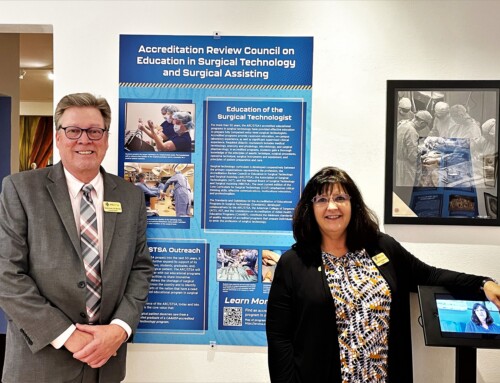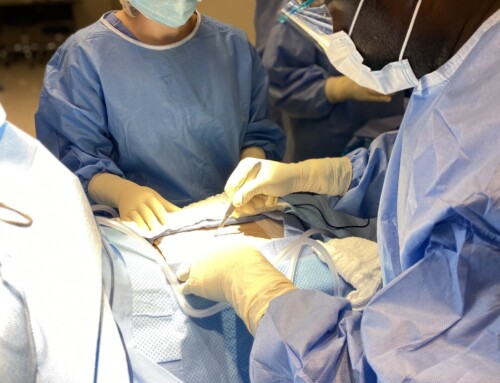With June upon us, we enter the last half of 2017. “Time flies” may be an apt descriptor for the year so far, although it seems more like we have rocketed into the summer months.
As 2018 rapidly approaches, so does the scheduled review of the Commission on Accreditation of Allied Health Education Programs (CAAHEP) Standards and Guidelines for the Accreditation of Education Programs in Surgical Technology. Every five years, the Accreditation Review Council on Education in Surgical Technology and Surgical Assisting (ARC/STSA) is required to review the profession’s CAAHEP Standards and Guidelines and provide the CAAHEP Board of Directors with a written report on the outcome of that review. CAAHEP Policy 401 describes the types of changes that may occur as a result of the review.
Committees on Accreditation (CoAs) within the CAAHEP system are responsible for developing and periodically revising Standards and Guidelines in order to:
- Maintain compliance with CAAHEP policy, including the Standards Template; and
- Maintain congruence between the educational preparation of students and the accepted state of practice for the discipline.
ARC/STSA, in partnership with CAAHEP, the American College of Surgeons (ACS) and the Association of Surgical Technologists (AST) cooperate to establish, maintain and promote the Standards. In fact, ACS and AST support and sponsor only one nationally recognized programmatic accreditation organization: ARC/STSA.
As defined by CAAHEP, accreditation Standards and Guidelines are the minimum standards of quality used in accrediting programs that prepare individuals to enter the surgical technology profession. Standards are the minimum requirements to which an accredited program is held accountable. Guidelines are descriptions, examples or recommendations that elaborate on the Standards. Guidelines are not required but can assist with interpretation of the Standards.
The current CAAHEP Accreditation Standards for Surgical Technology were adopted in 2013 and include a Guideline related to Standard I.A. stating, “Projected for August 1, 2021, all sponsoring institutions should award a minimum of an associate degree at the completion of the program.” What brought us to the 2013 Guideline language, and what will the CAAHEP process look like moving forward?
Two important factors have guided the profession in this direction. First, in 1990, the AST House of Delegates adopted a non-binding resolution calling for the associate degree to be the “preferred model for entry level surgical technology education.” At that time, there were 113 accredited programs with fewer than 10 associate degree programs.
The second factor is the evolving trend toward the associate degree since then. Today there are 433 CAAHEP-accredited surgical technology programs and, of those, 250 offer an associate degree or an associate/certificate option. Those programs have determined voluntarily that the associate degree best meets the needs of their communities.
Revisions to the Standards and Guidelines require not only the approval of CAAHEP and ARC/STSA, but also the approval of AST and ACS. Each organization will conduct a detailed assessment of any proposed changes before decisions are made and will carefully evaluate any unique challenges that programs may face and will find workable solutions for all programs.
Over the coming months, we will discuss the Standards revision process, associate degree opportunities and challenges, and ARC/STSA efforts to provide support to our communities of interest related to degree implementation. Stay tuned. Together we can achieve more.



